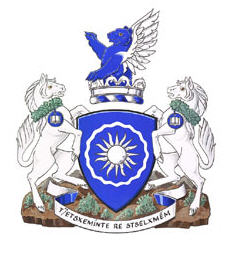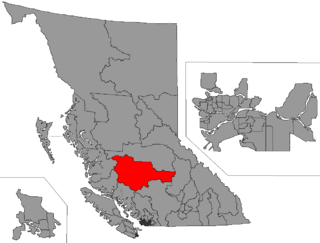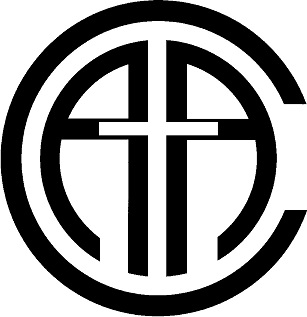
Highway 20, also known as the Chilcotin Highway, and officially dubbed the Alexander MacKenzie Highway, is one of the two main east–west routes in the Central Interior of British Columbia (the other being Highway 16. The Chilcotin Highway runs 457 km from Williams Lake westward through the Chilcotin region to North Bentinck Arm, an inlet from the Pacific Ocean where the town of Bella Coola is located. As of 2019, all but 42 km has been paved, mostly for expediting the removal of timber from the region, which, like most of British Columbia, is afflicted with pine beetle infestations. Logging traffic and ranch-related traffic on the route can be expected.

Thompson Rivers University is a public teaching and research university offering undergraduate and graduate degrees and vocational training. Its main campus is in Kamloops, British Columbia, Canada, and its name comes from the two rivers which converge in Kamloops, the North Thompson and South Thompson. The university has a satellite campus in Williams Lake, BC and a distance education division called TRU-Open Learning. It also has several international partnerships through its TRU World division. TRU is accredited by the Northwest Commission on Colleges and Universities (NWCCU) at the associate, baccalaureate and master's degree levels.

Williams Lake is a city in the Central Interior of British Columbia, in the central part of a region known as the Cariboo. Williams Lake is one of the largest cites, by population of metropolitan area, in the Cariboo after neighbouring Quesnel. The city is famous for the Williams Lake Stampede, which was once the second largest professional rodeo in Canada, after only the Calgary Stampede.

Cariboo—Prince George is a federal electoral district in the province of British Columbia, Canada, that has been represented in the House of Commons of Canada since 2004.
Cariboo was a federal electoral district in British Columbia, Canada, that was represented in the House of Commons of Canada from 1871 to 1892.
Chilcotin, meaning "people of the red ochre river" may refer to:
The Chilcotin region of British Columbia is usually known simply as "the Chilcotin", and also in speech commonly as "the Chilcotin Country" or simply Chilcotin. It is a plateau and mountain region in British Columbia on the inland lee of the Coast Mountains on the west side of the Fraser River. Chilcotin is also the name of the river draining that region. In the language of the Tsilhqot'in people, their name and the name of the river means "those of the red ochre river". The proper name of the Chilcotin Country, or Tsilhqotʼin territory, in their language is Tŝilhqotʼin Nen.

Bute Inlet is one of the principal inlets of the British Columbia Coast. It is 80 km (50 mi) long from the estuaries of the Homathko and Southgate Rivers at the head of the inlet, to the mouth, where it is nearly blocked by Stuart Island, and it averages about 4 km (2.5 mi) in width. Bute Inlet is in a spectacular wilderness setting and is one of the most scenic waterways in the world. In the upper reaches of the inlet mountains rise 2,700 m (9,000 ft) feet above sea level. Bute Inlet is a spectacular wilderness that is visited by very few people. In more recent years tourists are travelling from around the world to view grizzly bears in a natural setting and explore the wilderness of Bute Inlet.

The Cariboo Plateau is a volcanic plateau in south-central British Columbia, Canada. It is part of the Fraser Plateau that itself is a northward extension of the North American Plateau. The southern limit of the plateau is the Bonaparte River although some definitions include the Bonaparte Plateau between that river and the Thompson, but it properly is a subdivision of the Thompson Plateau. The portion of the Fraser Plateau west of the Fraser River is properly known as the Chilcotin Plateau but is often mistakenly considered to be part of the Cariboo Plateau, which is east of the Fraser.
Cariboo was one of the twelve original electoral districts created when British Columbia became a Canadian province in 1871. Roughly corresponding to the old colonial electoral administrative district of the same name, it was a three-member riding until the 1894 election, when it was reduced through reapportionment and became a two-member riding until the 1916 election, after which it has been a single-member riding. It produced many notable Members of the Legislative Assembly (MLAs), including George Anthony Boomer Walkem, third and fifth holder of the office of Premier of British Columbia and who was one of the first representatives elected from the riding; John Robson, ninth Premier of British Columbia; and Robert Bonner, a powerful minister in the W.A.C. Bennett cabinet, and later CEO of MacMillan Bloedel and BC Hydro.
School District 27 Cariboo-Chilcotin is a school district in central British Columbia. It covers a large geographic area in the Chilcotin and Cariboo districts, from 100 Mile House in the south to Williams Lake in the north.
Columneetza Junior Secondary is a public Middle school in Williams Lake in the Canadian province of British Columbia. The school is administered as part of School District 27 Cariboo-Chilcotin. It is a grade 7-9 facility enrolling approximately 750 students. The principal is Hattie Darney.
Peter Skene Ogden Secondary is a public high school in 100 Mile House in the Canadian province of British Columbia. The school is administered as part of School District 27 Cariboo-Chilcotin. It is a grade 8 to 12 facility enrolling approximately 565 students. The principal is Ms C Currie.
Skyline Alternate School is a public alternate high school program in Williams Lake in the Canadian province of British Columbia. The school is administered as part of School District 27 Cariboo-Chilcotin. The principal is Heather Auger.

The British Columbia Interior, popularly referred to as the BC Interior or simply the Interior, is a geographic region of the Canadian province of British Columbia. While the exact boundaries are variously defined, the British Columbia Interior is generally defined to include the 14 regional districts that do not have coastline along the Pacific Ocean or Salish Sea, and are not part of the Lower Mainland. Other boundaries may exclude parts of or even entire regional districts, or expand the definition to include the regional districts of Fraser Valley, Squamish–Lillooet, and Kitimat–Stikine.

William Pinchbeck was one of the original settlers in the Cariboo region of British Columbia, Canada. He was a member of the British Columbia Provincial Police and owned a roadhouse and many other properties in Williams Lake, British Columbia.

Cariboo-Chilcotin is a provincial electoral district in British Columbia, Canada. It was established by the Electoral Districts Act, 2008 and was first contested in the 2009 general election. It was last contested in the 2020 provincial election.

Cariboo Adventist Academy is an independent K-12 Christian school located in Williams Lake, British Columbia, Canada, that is affiliated with the Seventh-day Adventist Church. The school serves the Cariboo region of British Columbia.
Lorne Doerkson is a Canadian politician who was elected to the Legislative Assembly of British Columbia in the 2020 British Columbia general election. He represents the electoral district of Cariboo-Chilcotin as a member of the British Columbia Conservative Party. He serves as the Opposition Critic for Emergency Management and Climate Readiness, and Water, Land and Resource Stewardship. He earlier served as the Opposition Critic for Rural Development and as the Official Opposition Deputy Whip. On May 31, 2024, Doerkson crossed the floor and joined the BC Conservative Party, having been elected as a member of the BC Liberal Party during the 2020 British Columbia general election.

Gloria Katherine Chomiak Atamanenko was a Canadian social worker, writer, editor, and translator. As a teenager in the United States, she made headlines as the winner of a national essay contest on the theme "I Speak for Democracy".











